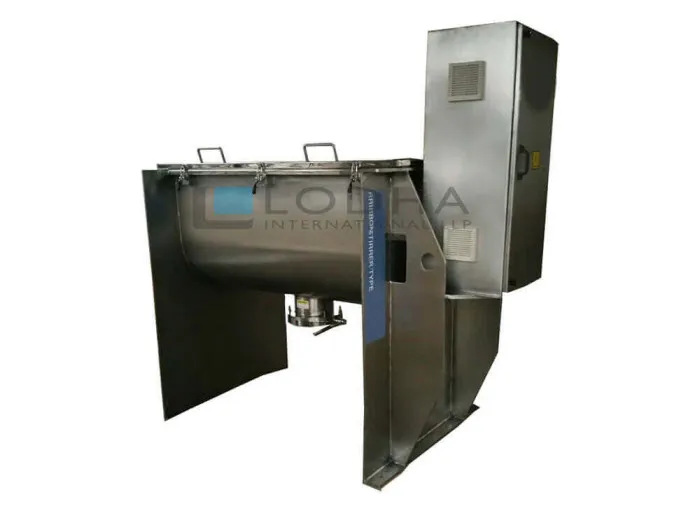Get in touch! +91 9687731331 | +91 9687631331 | info@lodhapharma.com
Automated Ribbon Blender Maximizes Efficiency and Consistency
Ribbon blenders have long been a staple in the manufacturing industry, providing an efficient and reliable solution for mixing various materials. As industries continue to evolve and demand higher levels of efficiency and consistency, the integration of automation into ribbon blenders has become a game-changer.
Ribbon blenders are versatile mixing machines used in a wide range of industries, including food processing, pharmaceuticals, chemicals, and more. They consist of a trough-shaped container with a horizontal agitator comprising inner and outer helical ribbons. These ribbons rotate in opposite directions, effectively blending the materials placed inside the blender.
This machine consists of a U-shaped horizontal agitator for low to medium volume capacity and a W-shaped horizontal agitator for large to mega volume capacity.
Ribbon Blender Enhances Efficiency
Automation plays a pivotal role in maximizing the efficiency of ribbon blenders. By automating the blending process, tasks that were previously done manually, such as ingredient weighing, material addition, and blend monitoring, can now be performed with precision and accuracy. This eliminates human error and reduces the overall processing time, leading to increased productivity and cost savings.
Ribbon Blender Ensure Consistency
Consistency is paramount in industries that rely on ribbon blenders. Consistency is paramount in industries that rely on ribbon blenders. Manual blending processes are prone to variations in mixing time, ingredient ratios, and overall blend quality. With automation, these variables can be tightly controlled, ensuring consistent results batch after batch. By precisely measuring and monitoring parameters such as blending time, speed, and ingredient quantities, automation minimizes variations and delivers a uniform blend every time.

Ribbon Blender Saves Time and Labor
One of the primary benefits of ribbon blender automation is the significant time and labor savings it offers. Automating tasks such as ingredient loading, blending, and discharge reduces the reliance on manual labor. Operators can focus on overseeing the process rather than performing repetitive tasks, leading to increased productivity and efficiency. Additionally, automation reduces the chances of human error, resulting in higher quality blends and reduced waste.
Ribbon Blender Improves Product Quality
Automation brings a higher level of precision and control to the blending process, resulting in improved product quality. By accurately measuring ingredient quantities and precisely controlling blending parameters, automation ensures that each batch meets the desired specifications. This consistency translates into a high-quality end product that meets customer expectations and complies with regulatory standards.
Ribbon Blender Increases Production Capacity
Automated ribbon blenders can handle larger volumes and operate at higher speeds compared to their manual counterparts. The ability to process larger batches in less time significantly increases production capacity. With automation, manufacturers can meet growing demands without compromising on quality or incurring additional labor costs. This scalability is particularly beneficial for industries experiencing rapid growth or seasonal fluctuations in demand.

